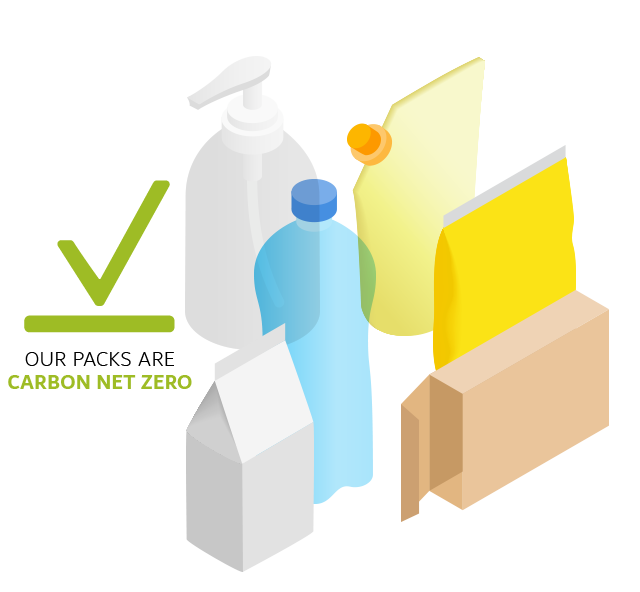HOW DO WE DO IT?
Our service provides granularity, accuracy and transparency for every SKU at the SKU level, throughout the year. Gone are the days of employing expensive life cycle analysts to calculate your carbon footprint at a given moment.
The Benchmark team’s extensive knowledge of the entire packaging production process means that we know the right questions to ask to gather the data, and then our software does the complex and time-consuming calculations. As a result, a life cycle analyst need only audit the data and process on an annual basis to certify compliance, saving large amounts of precious time and money.
Our knowledge and experience are complemented by our partners and globally recognised sources of data.
The IEA works with countries around the world to shape energy policies for a secure and sustainable future. They are at the heart of global dialogue on energy, providing authoritative analysis, data, policy recommendations, taking an all-fuels, all-technology approach. The IEA examines the full energy spectrum including renewables, oil, gas and coal supply and demand, energy efficiency, clean energy technologies, electricity systems and markets. This enables us to track energy and emission values by manufacturing site.
The Ecoinvent database is the world’s leading LCI database which delivers both in terms of transparency and consistency. The Ecoinvent database provides well documented process data for thousands of products, helping us to make truly informed choices about their environmental impact of the base materials e.g., different plastics or paper.

Most packaging manufacturing sites, in an endeavour to provide distinctive if not exclusive solutions, have their own carbon footprint. The variables can include direct energy usage and the allocation of indirect energy usage; different machines, sizes, running speeds and waste levels; different materials, widths, and thicknesses. There are also different constructions, laminates and adhesives; different amounts of colours printed and the percentage of ink coverage. There can also be a range of bag and pouch formats with different closure systems. Then there is packing storage and delivery which have too many variables to list. In short, using averages or data based on analysis conducted at a point in time is neither accurate nor transparent. To make a real impact when bettering carbon footprint, it is critical to have granular and accurate data, accounting for all variables.
Governments are increasingly recognising the need to legislate to reduce whole life carbon (that is operational and embodied carbon emissions) in all aspects of life and in particular, packaging. Three key words are repeated in many consultancy documents: Granularity, Accuracy and Transparency.
LCAs forms part of many of the new laws and policies dawning upon businesses. Benchmark has partnered with independent life cycle analysts who can use our software to ensure should you need their services for products the results will be reported back in a consistent way.
An LCA report will enable you to identify carbon hotspots of your packaging enabling you to make informed decisions.
Benchmark’s software solutions calculate the carbon footprint from source to factory gate of the packer or filler. This product data can then be added to enable holistic informed decisions for every SKU.

The University of Nottingham has one of the leading PHD research departments in the field of life cycle analysis and provides Benchmark with research and technical insights. They also work alongside our partnering commercial life cycle analysts to ensure consistency of reporting.

We collaborate with all our partners to accurately calculate the commercial and CO2e costs at every step of the process to generate transparent and reliable information on the packaging produced. Our trusted results are based on international standards, ISOs 14040 and 14044 which helps to ensure consistency, reliability, and independence from commercial pressures.
CARBON TRANSPARENCY
& COST ACCURACY
CO2e CALCULATOR
A first to market, low-cost solution, to calculate the CO2e for the packaging industry
- Provide a carbon footprint measurement at a SKU (design) level.
- A bottom up mathematical model, sourcing data from world leading CO2e databases.
- Calculate a single design reference to many thousands in one process.

CARBON LABELLING
A consistent and independently produced CO2e value printed on pack.
- Traffic light system supported with actual CO2e value.
- Communicate your companies efforts in decarbonisation directly to your end customer with on pack labelling.

COMMERCIAL CALCULATOR
Drive commercial excellence across your group, with a market-leading web based solution.
- Business performance & cost data, captured as a simple average through to complex matrices for all cost drivers.
- Workflow tools for; approvals and escalation, won and lost, enquiries and market intel capture.
- Group contribution margin scheme, aligned with your P&L can be customised and standardised throughout your group.

SHOULD COST CALCULATOR
Utilising our extensive database and market knowledge, the Benchmark team can cost model most material categories in the packaging industry.
- Estimate the prices one should expect to see at the SKU (design) level.
- Protect your business from ever volatile costs ensuring competitive prices are maintained.
- Collaborate with strategic suppliers, utilising our web-based solution as an Open-Book-Costing platform.

Meet the Team
We have deep functional and industry expertise, we are passionate about taking on commercial challenges that matter to our clients. Drawing on over 80 years' experience in the packaging industry, the team at Benchmark Consulting have consolidated their knowledge to develop a universal estimating and 'should-cost modelling' tool. Along with other tools and techniques, our aim is to aid in efficient decision making for purchasing and sales professionals.
Latest News and Updates
Please contact us for further details
Access our latest case study
The aim of this case study is to investigate whether accuracy, granularity and transparency, delivered by an independent source, are key to delivering ‘Carbon Footprint Modelling’ to ultimately drive the correct behaviour to reduce carbon emissions in the packaging industry.

























































































